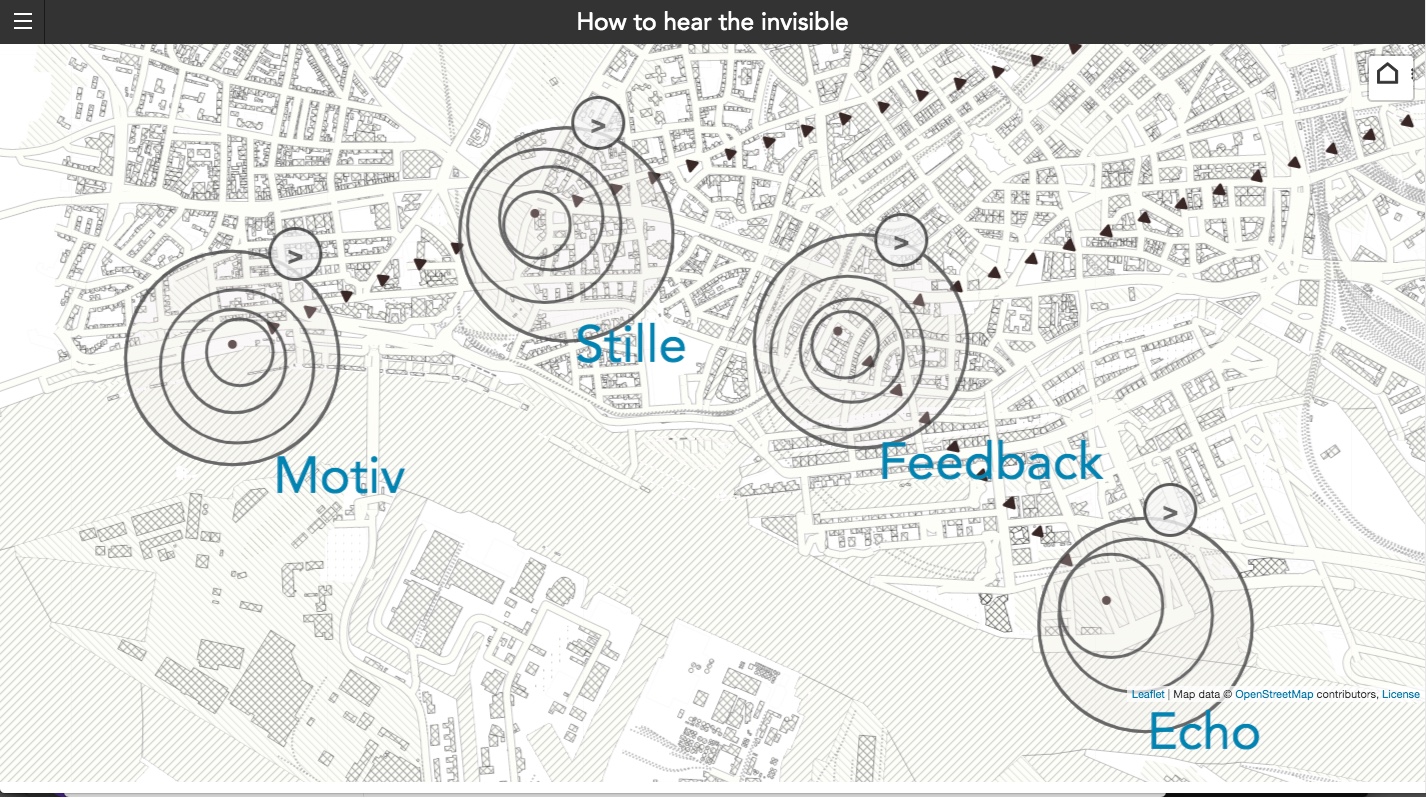Copyright: Katharina Pelosi
Katharina Kellermann (Pelosi), How to Hear the Invisible, 2016, Hamburg
Katharina Kellermann (Pelosi), How to Hear the Invisible – eine akustische Kartierung der post_kolonialen Erinnerungslandschaft, 2016, Hamburg
Hamburg’s urban space is full of colonial traces and references, which are expressed in architecture, street names and urban planning, but remain invisible in the complexity of their historical significance and their repercussions in our social and urban present. Backgrounds, resistances, and alternative perspectives remain unseen in the history and the continuities of colonial politics. The project How to Hear the Invisible – An Acoustic Mapping of the Post_Colonial Memory Landscape Hamburg (2017) maps the acoustic dimension of these colonial traces: What do these places sound like? What verbally mediated information do we need to decode these places and to unlock their meaning? How do they affect our present – designed through so-called auditory figures1, as motif, silence, feedback, echo and trace? How can they become audible?
From the starting point of these questions, an acoustic mapping was created that collected sounds taken from these locations through different recording techniques, voices that are seldomly heard in the debate, and verbal information that marks the invisible. This collection, originally conceived as a sound installation for eight audience members, has been edited on the basis of the auditory figures as a multi-track mapping in digital space and can now be found on the website http://www.how-to-hear-the-invisible.org. When visiting this website, users can listen to Hamburg’s urban space in its colonial dimensions.
Researcher: Katharina Kellermann (Pelosi)
Co-researchers: Millicent Adjei, Hanni Jokinnen, Israel Kaunatjike, Tania Mancheno, Andreas Schneider
Participants: Simone Dede Ayivi, Hauke Heumann, Toni Jessen, La Toya Manly Spain, Ulf Treger, Rosa Wernecke
Formats: Performative Collection
www.how-to-hear-the-invisible.org
1 The term goes back to Brandon La Belle, who uses it to describe how sounds operate as micro-epistemologies that enable us to understand the world in a specific way.


